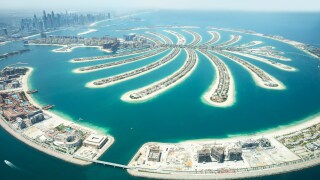If the project progresses it would mark DC Alliance's first step outside of Australia and also Palau's first facility.
The two are exploring the viability of a tier III, 1MW facility which, if developed, would accommodation up to 200 racks initially, with the potential to increase capacity to 5MW with up to 1,000 racks. It could also host the landing for a dedicated branch of the proposed ECHO cable, according to Roy Wong, executive chairman of DC Alliance.
Wong said: “DC Alliance has always recognised the potential of operating at the edge. Our last deal with DXN Limited expanded our footprint across Australia. Now, Palau is our first step out of Australia into a frontier market with immense potential.
"I’m pleased that Pacific Blockchain Corporation has entrusted DC Alliance the privilege of providing its expertise in data centre design, build and operate to achieve the goal of building the first Uptime-Certified Data Centre in Palau.”
Digital residency
Palau isn't just a crossroads for the region's growing traffic needs.
In January the country unveiled its Digital Residency programme, a month after the president, HE Surangel S. Whipps, Jr, signed the Digital Residency Act into law.
The developments saw the government partner with Cryptic Labs – a blockchain research institute and commercial accelerator – to launch the Root Name System (RNS), which marks the first time global citizens can claim blockchain digital residency backed by a sovereign entity.
The new form of legal ID can be used to access digital financial services and more than a quarter of a million people have signed up since mid-January after the government allowed individuals from around the world to apply for digital residency through the RNS platform.
PBC and DC Alliance said this is a huge driver of their business case.
Shalom Ngelechel Etpison, VP of Pacific Blockchain Corporation, said: “Strategically, Palau’s location is positioned perfectly as a digital crossroad for the ever-growing data traffic across the Pacific. Our state-of-the-art internet connectivity will only be enhanced further in the coming years.
"With these assets, the Palau government is embracing new technology such as blockchain and digital residency, moving forward with its digital finance technology plans. Building a data centre is the next practical step for Palau and the timing could not be better than now.”
PBC's involvement will see blockchain implemented for security with Wong telling Capacity that the technology could support both fintech activities and potential crypto-mining operations in future.
He said: "We do support all users in digital or blockchain technology which may include validation nodes and/or crypto related activities."
As for the impact this could have on the facility's energy use and, therefore, sustainability the two companies said they would explore the adoption of "sustainable and/or renewable solutions" and that the facility is planned to run on "power from sustainable sources which we are currently exploring with various vendors". However, "we are it is still in the early stages we are unable to give more details", Wong said.
"We appreciate the high-power needs of a data centre and will ensure it will operate in a sustainable manner. A purpose-built data centre represents an effective use of power in support of the digital economy. We believe this is possible in Palau," Wong added.
Pacific subsea challenges
While the Pacific region has plenty of subsea cables, Palau's first cable connected in 2017 and the Palau Cable 2 (PC2) is due for completion before the end of this year.
Palau is also expected to host a dedicated branch of the ECHO cable network, one of three projects by Facebook and Google in the region – along with Bifrost and Apricot – although most of that capacity isn't scheduled to come into service until 2024
DC Alliance and PBC said the country's bandwidth usage has increased by "around seven times in just three years", with the growth set to continue thanks to the Digital Residency scheme and the country's aspiration to become a fintech hub.
However, following recent events in Tonga, the proximity of these cables to the Pacific Ring of Fire has come under the spotlight.
As Capacity reported yesterday, repairs on the 827km-long Tonga Cable have faced further delays raising questions about how to maintain connectivity after a disaster.
Wong said: "We acknowledge the risk. We will have disaster recovery in geo-redundancy in DC Alliance's network of DCs and our focus is on the strength and resilience of the data centre build.
"That said, the subsea cable operators are the ones who will assess the risk of earthquakes and have their disaster recovery plans if cables operated by them are damaged," he added.





